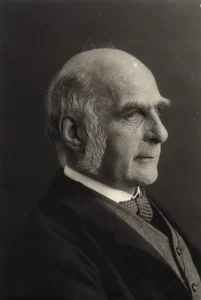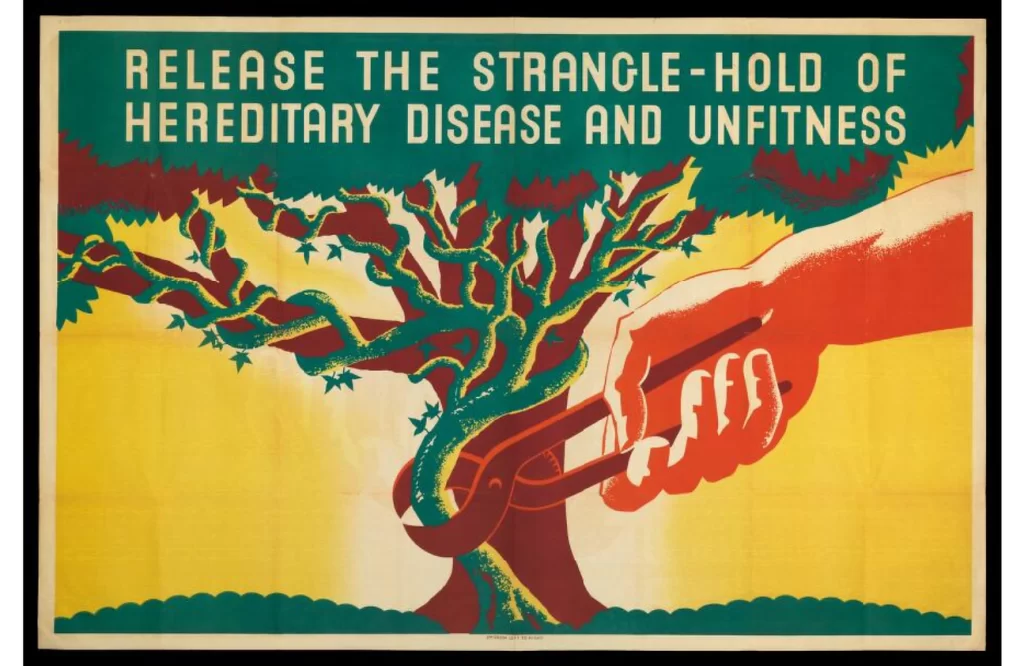Galton’s political beliefs evidently undermined the rigour of his qualitative claims. What is less discussed is how his political beliefs also shaped his quantitative innovations in statistical hereditary research.
In a letter to his cousin Sir Francis Galton, Charles Darwin writes: “I do not think I ever in all my life read anything more interesting and original … I congratulate you on producing what I am convinced will prove a memorable work.”[1] The work Darwin refers to is Galton’s Hereditary Genius, published in 1869.

At one point in this work, Galton argues that “the ablest race of whom history bears record is unquestionably the ancient Greeks”.[2] Galton was an incredibly influential scientist, and we would expect rigorous evidence to uphold this supposedly “unquestionable” claim. To support his belief, Galton claimed that he had “often discussed this subject with competent persons, and can only recall a few cases of the inferiority of the white man”.[3]
I wish to bring your attention to not only what Galton argued, but how well he argued it. If we presume that most of these “competent persons” he refers to were fellow upper-middle-class white men in London, one wonders if he should have discussed this idea more broadly to gather more representative evidence. Or, in scientific jargon: he should have increased his sample size to improve internal validity. Galton’s political beliefs evidently undermined the rigour of his qualitative claims. What is less discussed is how his political beliefs also shaped his quantitative innovations in statistical hereditary research.
Who was Sir Francis Galton?
Sir Francis Galton lived from 1822-1911, and pursued travels around Europe, the Middle East, and Africa during his youth, interjecting his studies in Mathematics and later Medicine (without completing either). His family left him “a sufficient fortune” to fund these adventures and his later scientific pursuits (a common privilege and practice of many late nineteenth century geographers and scientists). Galton integrated his two academic interests to advocate for more quantitative evidence for medical claims, demonstrating this approach in over 200 papers to offer his opinion on diverse topics, from meteorology to fingerprints to eugenics. His primary interest was in eugenics, an example of which we read earlier, that average intelligence varies significantly across races and classes, since it is presumably inherited from parents to children. Upon his death, he gave most of his inheritance to fund the first eugenics research chair at University College London [4].
When you look for more information about Sir Francis Galton, you will read about his various innovations in biostatistics and hereditary research. Each source presents his legacy differently, through intentional omission or reframing of his impact.
The Encyclopedia Britannica introduces Galton as an “English explorer, anthropologist, and eugenicist known for his pioneering studies of human intelligence,” who advocated for “a population consisting of genetically superior men and women”.[4] The entry mentions Hereditary Genius (1869) at length (and its influence on Darwin), yet omits Galton’s key thesis about white racial superiority.
The Galton Institute, an organization exploring human heredity and founded by the feminist social reformer Sibyl Neville-Rolfe in 1907, publishes this statement about its namesake: “Galton’s idea of ‘eugenics’ was based on concepts and hypotheses that served to create artificial hierarchies and division between peoples of different class, ethnicity and culture … Nonetheless, Sir Francis Galton made many profound contributions to the development of genetic science and genetic medicine … still used daily in current medical practice”.[5] This statement creates a clear distinction between Galton’s oppressive beliefs about eugenics and his research methods. In essence, his medical research is ethically sanitized.
This shuts down any need for further discussion about his political beliefs, focusing instead on his research techniques.
Yet, can a scientist’s motivations be completely separated from their techniques? If his techniques still influence modern medicine, how prevalent are his theories?

UCL Culture Curator Subhadra Das offers a more balanced assessment of Galton’s legacy in her Bricks and Mortals tour podcast. She explains that Galton first defined the term eugenics in 1883 as “the study of human characteristics passed on through the generations with a view to improving the human species”.[6] His core beliefs were that upper-class individuals were inherently intellectually superior to lower-class individuals, and that Europeans were inherently intellectually superior to non-white populations.
The theory of Eugenics was that society as a whole was undergoing a process of ‘degradation,’ due to the slowed reproduction of the ‘wealthy, white, intelligent’ elite classes of Europe, and the supposed increased reproduction of those deemed to be of ‘inferior’ breeding stock – the ‘mentally defective,’ ‘feeble-minded,’ and non-white populations of the world. These populations were thought to inherit traits like criminality, alcoholism, and deviancy from their family line, living lives of debauchery and winding up within public institutions – asylums, prisons, and hospitals. Eugenicists like Galton conducted numerous studies to try to prove their theories and advocated for the sterilisation of those they determined to be an inherent danger to society.
Galton and his followers generated statistical models comparing traits between individuals of different classes and races. He created artificial connections between physical attributes (skin colour, stature, head shape etc.) with mental capability and overall societal value. For instance, one of his failed experiments looked for evidence that African fingerprints were less sophisticated than European fingerprints. [7]
Of course, racial theories of superiority were widely discussed in European literature, culture, and medical theory prior to Galton. Yet Galton led a movement to legitimize these theories through the supposedly objective veil of hereditary research and science. He distorted data to fit pre-existing conceptions about his own place in the world. This echoes with contemporary abuses of scientific validity, such as the false claim of vaccines causing autism.
Galton’s theories justified numerous atrocities, such as America’s brutal killings of Indigenous peoples in its 1800s period of colonization. It provided scientific validity for racial segregation in America. It later served as the justification for the Nazi extermination campaigns, especially the Aktion T4 which ‘euthanised’ anyone deemed mentally defective. Across North America, it provided the basis for the forced sterilisation of thousands of working class men and women. The ultimate realisation of Galton’s eugenic theories by later advocates was the Holocaust.
Renaming UCL’s Galton Lecture Theatre
Galton’s eugenics research and legacy is most closely tied with University College London, which received an endowment from Galton’s inheritance to fund a Eugenics research chair. A detailed June 2019 article in Significance, the magazine of the Royal Statistical Society (RSS), summarizes the contemporary debate about Galton’s legacy, comparing an initiative to rename University College London’s Galton Lecture Theatre with similar protests against Cecil Rhodes’ statue at Oxford (which will be removed) and the statue of the slave-owner Edward Colston at Bristol (which has been removed).[7]
In June 2020, UCL announced plans to rename its Galton Lecture Theatre. [8] The initiative began several years ago through student protests, an academic research project on the history of eugenics at UCL led by Professor Iyiola Solanke, and public engagement initiatives such as the Bricks and Mortals history podcast mentioned earlier.
However, debates about renaming buildings and removing statues draw opposition as well as support, as recent global protests in June 2020 highlight. Deeply-etched assumptions about what memorialisation means have continuously fuelled these disagreements. Disagreements will continue until we question and discuss these assumptions more openly.
written by Lunan Zhao
References:
[1] http://galton.org/letters/darwin/correspondence.htm
[2] Galton, Francis, Hereditary Genius: An Inquiry into Its Laws and Consequences (London, 2006), p. 308.
[3] Galton, Francis, Hereditary Genius: An Inquiry into Its Laws and Consequences (London, 2006), p. 307.
[4] https://www.britannica.com/biography/Francis-Galton
[5] http://www.galtoninstitute.org.uk/history/eugenic-past/
[6] https://www.ucl.ac.uk/culture/projects/bricks-mortals
[7] https://rss.onlinelibrary.wiley.com/doi/pdf/10.1111/j.1740-9713.2019.01275.x





